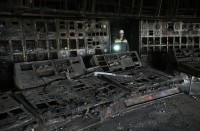More than 150 American architects arrived in Havana this week as part of joint efforts with their Cuban counterparts to restore the glory and grandeur of Old Havana’s architectural heritage.
The U.S. architects are from the prestigious American Institute of Architects (AIA) and their visit to Havana coincides with the Cuban capital being chosen for 47th Conference by the Design Committee of the AIA.
The honour means that American architectural expertise will be used to help restore the beauty of Havana’s history buildings, which have decayed and deteriorated due to a lack of maintenance, a lack of funds and the city’s hot, humid Caribbean climate.
The visit comes amidst an increase in American tourists to Havana, spurring fears that a possible influx could ruin the city’s character.
But Phillip Laird from the AIA told Reuters that the goal for the visit is to make Havana a great Cuban city and not to give it another identity.
“I think most people would want to see Havana preserved as a Cuban city, I don’t think Americans want Havana to turn into a city like any other city in the world. I think part of the goal is to preserve the character that Havana has and just rehabilitate projects, rehabilitate buildings and make things better for the Cubans in Havana,” he said.
With its mix of Neoclassical, Baroque, Art Deco and modernist architecture, Old Havana has been awarded World Heritage listing by UNESCO.
Since diplomatic ties have been restored between the U.S. and Cuba, there has been strong international interest from developers seeking to move in on Old Havana’s economic potential and build boutique hotels in crumbling old buildings.
New York architect Ronnette Riley said that she was in Havana alongside her American counterparts to see for herself the capital’s architectural heritage before international investors and developers move in.
“I think what is interesting from an architectural point of view is the opportunity and the lost possibility. So we want to see what’s here before foreign companies come in and possibly change things,” said Riley.
Building collapses are not unheard of in Havana. Since the fall of the Soviet Union, Cuba lost its main source of funding, putting a strain on public restoration projects.
Although international tourists tend to romanticise scenes of life in Havana with its vintage Buicks parked outside crumbling homes, it is estimated that two-thirds of Havana’s historic building stock is in a state of disrepair that imperils the country’s heritage.
“For American architects, it is our responsibility to help preserve what you have here. It is a beautiful city. It is one of a kind. To lose that heritage would be a great loss for the whole world, not just for Cuba,” said Cuban-American architect, Albert Garcia.
The AIA’s conference in Havana will also provide local Cuban architects with the expertise of visiting professors, researchers, specialists and restorers renowned in their lines of work.
Gustavo Lopez of the Museum of Havana said the country could benefit from the expert knowledge.
“They have experience and have technological training which we perhaps lack a little. In some areas we are not so trained. They also have the economic strength in Cuba that we need so to as keep developing Havana so that it is so much better than what it is today,” said Lopez.
In recent years, more and more international funds have been used in restoration projects in Havana. According to UNESCO, over one-third of Old Havana has been restored thanks to international cooperation with groups like the AIA.
But there is still a way to go to ensure that Havana’s architectural jewels are not lost.






